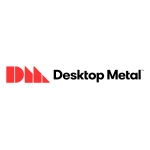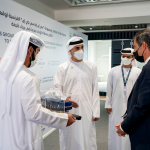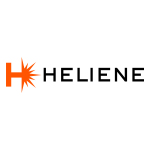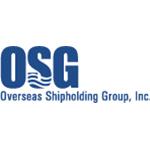SAN RAMON, Calif. & LAKE MARY, Fla. & HOLLADAY, Utah--(BUSINESS WIRE)--#BESS--Chevron U.S.A. Inc., through its Chevron New Energies division, announced it has agreed on a framework to acquire an equity interest in ACES Delta, LLC (ACES Delta), which is a joint venture between Mitsubishi Power Americas Inc. (Mitsubishi Power) and Magnum Development, LLC (Magnum) that owns the Advanced Clean Energy Storage project. This project will produce, store and transport green hydrogen at utility scale for power generation, transportation and industrial applications in the western United States.
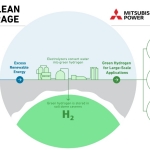

The joint venture is located in Delta, Utah, adjacent to the Intermountain Power Plant, which will use green hydrogen to produce electricity with lower lifecycle carbon emissions. Future anticipated projects include the expansion of green hydrogen supply to other Western states and the construction of connecting hydrogen infrastructure to build a regional hydrogen production, transportation and supply network. Chevron is working to build demand for hydrogen — and the technologies that support it — in heavy-duty transportation and industrial sectors in which greenhouse gas emissions are hard to abate.
“Chevron New Energies was created to grow new competitive business lines in areas like hydrogen,” said Jeff Gustavson, President of Chevron New Energies. “The potential to partner with Mitsubishi Power and Magnum Development on the Advanced Clean Energy Storage project presents an exciting opportunity that would bring together our unique strengths and would provide a scalable platform to supply our customers with affordable, reliable and ever-cleaner energy.”
Paul Browning, President and CEO of Mitsubishi Power Americas, said, “For several years, we’ve been working with early adopters of green hydrogen in the power sector that have easy access to salt domes or existing hydrogen infrastructure, such as the Intermountain Power Agency and Magnum Development. Now it’s time to connect massive geologic hydrogen storage in Delta, Utah, to power, transportation and industrial users throughout the western United States. Chevron’s footprint and expertise in the transportation and industrial sectors make them an ideal partner for this next phase of expansion. Together with our customers and partners, we are creating a Change in Power.”
“I look forward to the opportunity to collaborate with Chevron as a strategic partner in our ACES Delta venture. Chevron’s participation will add tremendous value as we develop a world class — and world’s largest — green hydrogen production and storage facility,” said Craig Broussard, President, CEO and Board Chairman of Magnum Development, LLC. “Combined with Chevron’s in-depth capabilities, the ACES Delta facility will serve as a platform to deliver on our shared vision and continue building our robust pipeline of high quality, actionable projects that will help decarbonize multiple sectors of the U.S. economy.”
ACES Delta is co-owned by Magnum, which is a Haddington Ventures portfolio company, and Mitsubishi Power. Chevron, Magnum and Mitsubishi Power are negotiating definitive documentation outlining Chevron’s participation in the joint venture. The terms of this transaction are subject to the negotiation of definitive agreements, and closing of the transaction will be subject to customary closing conditions.
About Chevron
Chevron is one of the world’s leading integrated energy companies. We believe affordable, reliable and ever-cleaner energy is essential to achieving a more prosperous and sustainable world. Chevron produces crude oil and natural gas; manufactures transportation fuels, lubricants, petrochemicals and additives; and develops technologies that enhance our business and the industry. To advance a lower-carbon future, we are focused on cost efficiently lowering our carbon intensity, increasing renewables and offsets in support of our business, and investing in low-carbon technologies that enable commercial solutions. More information about Chevron is available at www.chevron.com.
About Mitsubishi Power Americas, Inc.
Mitsubishi Power Americas, Inc. (Mitsubishi Power) headquartered in Lake Mary, Florida, employs more than 2,300 power generation, energy storage, and digital solutions experts and professionals. Our employees are focused on empowering customers to affordably and reliably combat climate change while also advancing human prosperity throughout North, Central, and South America. Mitsubishi Power’s power generation solutions include gas, steam, and aero-derivative turbines; power trains and power islands; geothermal systems; PV solar project development; environmental controls; and services. Energy storage solutions include green hydrogen, battery energy storage systems, and services. Mitsubishi Power also offers intelligent solutions that use artificial intelligence to enable autonomous operation of power plants. Mitsubishi Power, Ltd. is a wholly owned subsidiary of Mitsubishi Heavy Industries, Ltd. (MHI). Headquartered in Tokyo, Japan, MHI is one of the world’s leading heavy machinery manufacturers with engineering and manufacturing businesses spanning energy, infrastructure, transport, aerospace, and defense. For more information, visit the Mitsubishi Power Americas website and follow us on LinkedIn.
About Magnum Development
Magnum Development, LLC is developing multiple businesses utilizing the only known gulf style salt dome in the West. Magnum businesses include: hydrogen production and storage, compressed air energy storage (CAES), NGLs & refined products storage, crude oil storage, natural gas storage, storage of other industrial gases and salt sales. Located in Millard County, north of Delta, Utah, the 10,000-acre site is strategically located at the crossroads of existing and developing renewable electric, natural gas, petroleum liquids, rail and highway infrastructure.
CAUTIONARY STATEMENTS RELEVANT TO FORWARD-LOOKING INFORMATION FOR THE PURPOSE OF “SAFE HARBOR” PROVISIONS OF THE PRIVATE SECURITIES LITIGATION REFORM ACT OF 1995
This news release contains forward-looking statements relating to Chevron’s operations that are based on management's current expectations, estimates and projections about the petroleum, chemicals and other energy-related industries. Words or phrases such as “anticipates,” “expects,” “intends,” “plans,” “targets,” “advances,” “commits,” “drives,” “aims,” “forecasts,” “projects,” “believes,” “approaches,” “seeks,” “schedules,” “estimates,” “positions,” “pursues,” “may,” “can,” “could,” “should,” “will,” “budgets,” “outlook,” “trends,” “guidance,” “focus,” “on track,” “goals,” “objectives,” “strategies,” “opportunities,” “poised,” “potential” and similar expressions are intended to identify such forward-looking statements. These statements are not guarantees of future performance and are subject to certain risks, uncertainties and other factors, many of which are beyond the company’s control and are difficult to predict. Therefore, actual outcomes and results may differ materially from what is expressed or forecasted in such forward-looking statements. The reader should not place undue reliance on these forward-looking statements, which speak only as of the date of this news release. Unless legally required, Chevron undertakes no obligation to update publicly any forward-looking statements, whether as a result of new information, future events or otherwise.
Among the important factors that could cause actual results to differ materially from those in the forward-looking statements are: changing crude oil and natural gas prices and demand for our products, and production curtailments due to market conditions; crude oil production quotas or other actions that might be imposed by the Organization of Petroleum Exporting Countries and other producing countries; public health crises, such as pandemics (including coronavirus (COVID-19)) and epidemics, and any related government policies and actions; changing economic, regulatory and political environments in the various countries in which the company operates; general domestic and international economic and political conditions; changing refining, marketing and chemicals margins; the company’s ability to realize anticipated cost savings, expenditure reductions and efficiencies associated with enterprise transformation initiatives; actions of competitors or regulators; timing of exploration expenses; timing of crude oil liftings; the competitiveness of alternate-energy sources or product substitutes; technological developments; the results of operations and financial condition of the company’s suppliers, vendors, partners and equity affiliates, particularly during extended periods of low prices for crude oil and natural gas during the COVID-19 pandemic; the inability or failure of the company’s joint-venture partners to fund their share of operations and development activities; the potential failure to achieve expected net production from existing and future crude oil and natural gas development projects; potential delays in the development, construction or start-up of planned projects; the potential disruption or interruption of the company’s operations due to war, accidents, political events, civil unrest, severe weather, cyber threats, terrorist acts, or other natural or human causes beyond the company’s control; the potential liability for remedial actions or assessments under existing or future environmental regulations and litigation; significant operational, investment or product changes undertaken or required by existing or future environmental statutes and regulations, including international agreements and national or regional legislation and regulatory measures to limit or reduce greenhouse gas emissions; the potential liability resulting from pending or future litigation; the company's ability to achieve the anticipated benefits from the acquisition of Noble Energy, Inc.; the company’s future acquisitions or dispositions of assets or shares or the delay or failure of such transactions to close based on required closing conditions; the potential for gains and losses from asset dispositions or impairments; government mandated sales, divestitures, recapitalizations, taxes and tax audits, tariffs, sanctions, changes in fiscal terms or restrictions on scope of company operations; foreign currency movements compared with the U.S. dollar; material reductions in corporate liquidity and access to debt markets; the receipt of required Board authorizations to pay future dividends; the effects of changed accounting rules under generally accepted accounting principles promulgated by rule-setting bodies; the company’s ability to identify and mitigate the risks and hazards inherent in operating in the global energy industry; and the factors set forth under the heading “Risk Factors” on pages 18 through 23 of the company's 2020 Annual Report on Form 10-K and in other subsequent filings with the U.S. Securities and Exchange Commission. Other unpredictable or unknown factors not discussed in this news release could also have material adverse effects on forward-looking statements.

Contacts
Chevron
Tyler Kruzich
+1 925-549-8686
This email address is being protected from spambots. You need JavaScript enabled to view it.
Mitsubishi Power Americas
Christa Reichhardt
+1 407-484-5599
This email address is being protected from spambots. You need JavaScript enabled to view it.
Magnum Development
Michelle Judd
+1 801-748-5561
This email address is being protected from spambots. You need JavaScript enabled to view it.





